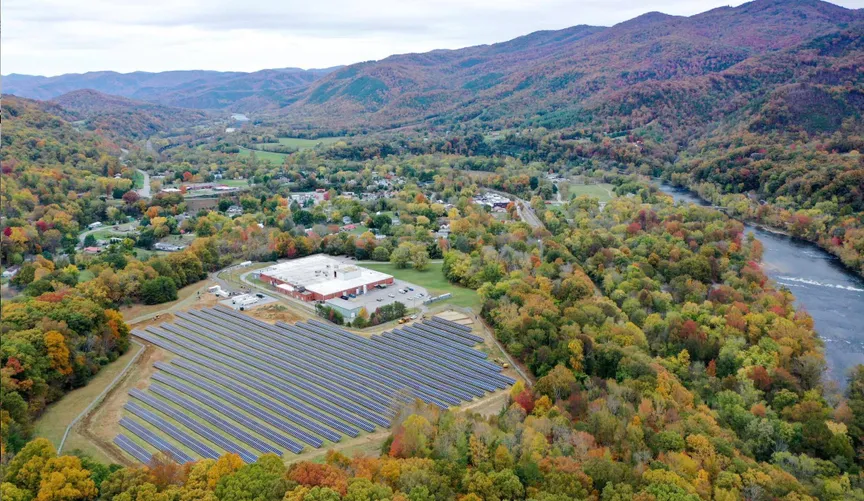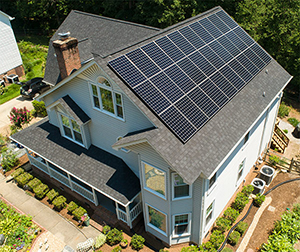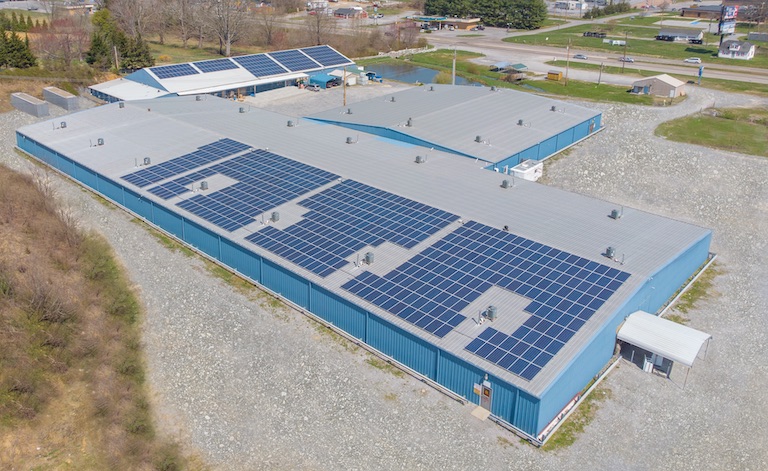
Hurricane Helene underscores need for more solar-battery microgrids
By Jeff St. John | 18 October 2024
Distributed solar and batteries are helping North Carolina communities that were cut off from grid power by flooding. Should utilities build them into resilience plans?
For years, Duke Energy has studied the threats that climate change poses to its power grid. It has produced tomes forecasting the risk to its power lines, substations, and power plants from fires, heat waves, and floods.
But the scope of Hurricane Helene’s devastation in the utility’s inland Carolinas territories — more than 350 substations disabled and a handful completely destroyed, and hundreds of thousands of people still without power a week after the floodwaters receded — has blown its risk forecasts out of the water.
Now, as tens of thousands of utility workers from across the country struggle to rebuild swaths of Duke’s grid from the ground up, energy experts warn that it and other utilities must start to consider alternatives to the century-old paradigm of utility poles, wires, and substations — like distributed power and microgrids.
Solar panels and batteries can power homes, businesses, churches, schools, and sometimes entire towns. These clean, distributed energy systems can reduce or replace the need for fossil-fueled backup generators during emergencies. They can also provide clean energy to the grid under normal conditions, helping to lower reliance on the fossil-fueled power plants responsible for climate change.
In parts of western North Carolina and South Carolina where floods swamped towns and knocked out highways, these technologies may be more cost-effective investments in climate resiliency than trying to harden traditional grid infrastructure against extreme weather.
Just how valuable distributed energy could be as an additional layer of protection against these threats is not yet clear, however. That’s largely because utilities and regulators haven’t fully baked those options into their existing methods of assessing climate change risks to their grids.
“It’s always hard right after these storms to talk about next steps, because all energy and time has to be spent on the emergency response,” said Jenny Brennan, a climate analyst at the nonprofit Southern Environmental Law Center. At the same time, it’s important to think ahead about “how to build for the next time a storm comes, so you’re more resilient as a community, and hopefully don’t have the same scale of destruction.”
In 2021 and 2022, Brennan was a member of a technical working group advising Duke on a climate resilience and adaptation study. That multiyear project assessed climate risks to a grid serving a roughly 56,000-square-mile service area in North Carolina and South Carolina. But that grid-focused report also touched on the idea of “supporting and encouraging local power options” such as microgrids, rooftop solar, and community solar.
Those distributed energy resources may be particularly well-suited for the mountainous, harder-to-reach parts of Duke Energy’s territory, Brennan said. “We’ve got to consider these different needs, and design an infrastructure that can be adaptive and address these problems.”
The utility-centric option: advanced microgrids
The more remote the town, the costlier it is to connect it to the grid — and to ensure that the connection remains intact. That’s why Duke Energy created a microgrid in Hot Springs, a town of about 535 residents just under 40 miles northwest of Asheville.
That project wasn’t cheap — Duke spent about $14.5 million to install 2 megawatts of solar power and 4.4 megawatt-hours of battery storage along with technology to control it as a grid resource. But according to the utility, that was cheaper than the grid upgrade required to provide the town with reliable power.
Hot Springs is connected to Duke’s larger grid by a single 10-mile power line that crosses mountainous and wooded terrain. The line is subject to frequent outages. Duke easily won regulatory approval in 2019 to build the cheaper microgrid instead of a second power line as a backup.
During Hurricane Helene’s aftermath, the microgrid was quickly restored and started providing power to Hot Springs’ downtown area after “the substation that fed the town was washed away by the floods,” Jason Handley, general manager of Duke’s Distributed Energy Group, wrote in a LinkedIn post. “Depending on solar output, we’ve also been able to bring on other load segments for periods of time.”
Duke is planning more microgrids at the Marine Corps Base Camp Lejeune in North Carolina and at a middle school that serves as a hurricane evacuation shelter in Florida. But at present, microgrids — or what Duke Energy calls “non-traditional solutions” — play only a minor role in the utility’s broader grid plans.
That’s largely because they are deemed cost-effective only for the most remote and vulnerable communities on its grid.
“If an energy storage system is the most cost-effective, feasible approach, Duke Energy will then pursue further development of the project,” the utility wrote in its climate resilience plan. Once such projects are identified, “the development cycle for these efforts is typically on the order of seven years.”
The basics for customers: rooftop solar and batteries
Tyler Norris, a Duke University doctoral fellow and former solar developer and special adviser at the Department of Energy, thinks that utilities like Duke Energy should look at more options than utility-managed microgrids.
“There needs to be an entire report dedicated to the role of distributed energy resources on a medium- and long-term solution set,” he said — including the kind of distributed energy that could have helped his elderly parents, whose home in Fairview, North Carolina, was without power for more than nine days after Hurricane Helene.
Norris spent a week with his parents, helping them manage without power or running water. “They have their own spring, but because we didn’t have power for the water pump, you have to haul water up the mountainside by hand,” he said. “I was trying to use a gas generator to charge our electric vehicle, which required jury-rigging it to the house ground.”
Rooftop solar systems can provide enough power to run a handful of household necessities — like a water pump — during daytime hours, he said. But most residential systems aren’t designed to keep power flowing during grid outages. Typically, these systems shut off when the grid goes down, a safety feature meant to prevent power from the solar panels from flowing back through downed utility lines and electrocuting utility workers doing repairs.
“It’s shocking how many of these existing behind-the-meter solar systems were not designed to provide any form of backup power,” Norris said. Some more recently installed systems are designed to disconnect from the grid and stay on during outages, but that’s far from universal. “I suspect that’s going to be an area of focus going forward.”
Some new high-end residential developments like Babcock Ranch and Hunters Point in Florida have been built with solar power and batteries designed to function during broader grid outages. But such microgrid-enabled communities are few and far between in the U.S., and the cost of solar and batteries remains out of reach for many households.
Meanwhile, utilities aren’t incentivized to promote solar and batteries for their customers, since their proliferation could erode utility revenues. Like most investor-owned utilities, Duke Energy has pushed to reduce the value of rooftop solar for customers, saying that it unfairly shifts costs from homes that can afford solar onto its broader customer base.
While the utility has promoted an alternative program that rewards customers for installing batteries that can shift residential solar power to times when it’s more valuable to the grid at large, that program is in its early stages, and rooftop solar advocates say it’s insufficient.
“Unless there’s a major change in incentives — which may require legislation — this will have to be driven from the ground up by local governments and community organizations,” Norris said.
Community resilience hubs: power for neighbors to help neighbors
That’s the route Michelle Moore, CEO of Washington, D.C.–based nonprofit Groundswell, is pushing for at community resilience centers in the Southeast. Her group has helped finance solar and battery projects for churches and community centers that already provide shelter and food for people in need.
One of those projects at the Vicars Community Center at the Community Church Atlanta rode through Hurricane Helene without losing power. But if it had, “there’s enough battery storage to keep critical systems going for three days, even if it can’t be recharged by solar,” she said. “If the sun shines, it can go on and on.”





